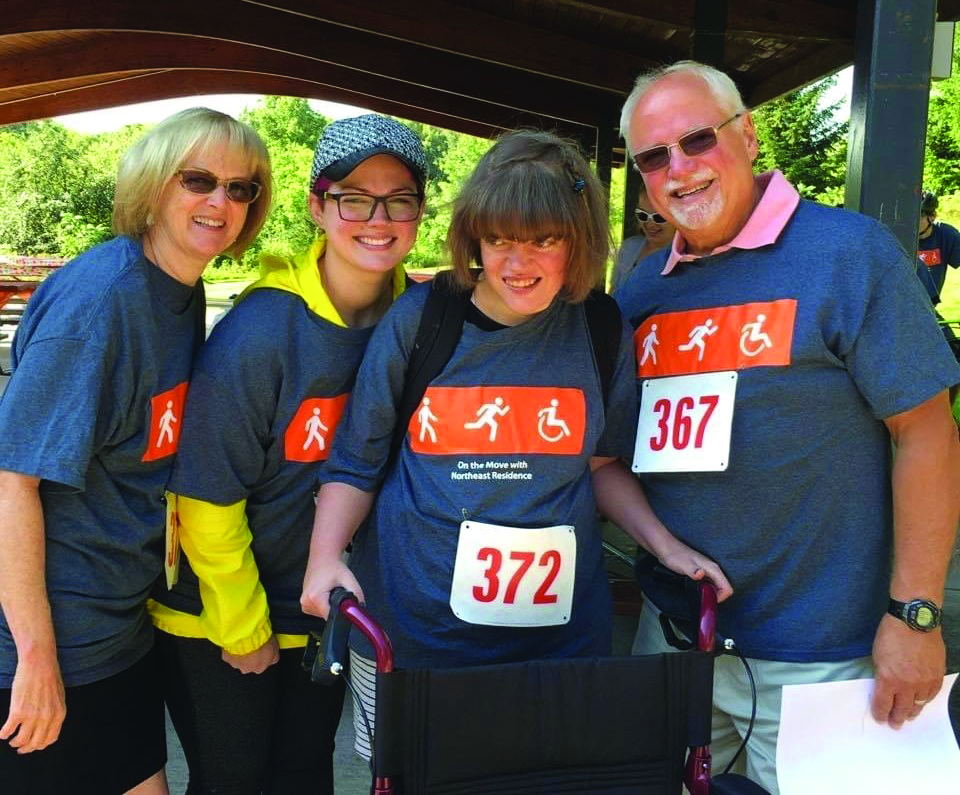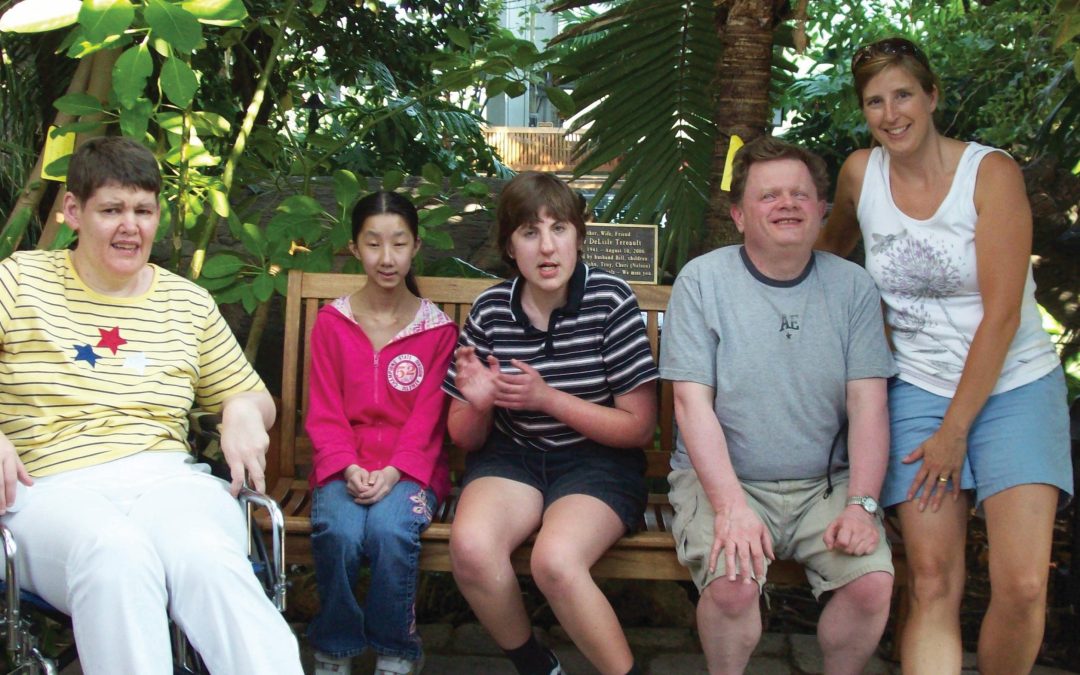In honor of Hammer’s 100th anniversary and NER’s 50th anniversary, we have published Legacies, a special anniversary magazine, celebrating our history, the people we have supported, and those who have made our mission possible all these years. Here is one of the featured stories:
NER pioneered a new concept for short-term relief

NER’s respite home
Up until its closing in 2019, NER’s respite program provided a short-term “home away from home” for individuals with developmental disabilities. Children and adults from more than 60 Twin Cities communities were served by the respite program located in a residential home in White Bear Lake.
While staying at respite, individuals could meet new friends, participate in community-based activities, and experience life outside the family home. Having served more than 400 different people from 1981-2019 when it closed due to staffing shortages, respite was a vital service for families. Typically, people would stay once a month for two to seven days. The total break from the day-to-day care a special-needs child required was also beneficial to siblings as it provided opportunities for attention and activities that might not be possible when the child with disabilities was at home. NER’s respite program helped people learn how to be away from their parents, which eased the move into a group home.

Tiffany (third from left) with her family
Michelle Olson is a NER parent and served on the Board of Directors from 2000-2022, when she joined the Hammer & NER Board. The Olsons’ daughter, Tiffany, used the respite program. “It ended up changing our lives,” says Michelle. “Tiffany had many grand mal seizures every day and needed close supervision. We had two other young children and when Tiff went to respite, we could spend time with them and help them with their homework. I remember picking Tiff up one day from respite—she was sitting there with her peers just hanging out and having fun. She had never had that—her own life. That program was wonderful. It was so critical.”
Carla Pleasants first began working at NER when it was in the St. Mary’s Church convent and later worked at the respite program. “Respite was the way many individuals entered our group homes,” Carla says. “A lot of families bonded at the respite program and found that their children fit together well, and they would move into a home together.” She has many fond memories of her time working in respite. “When you work closely with people who learn differently and their life is different, you can learn from them—they’ve enriched my life,” she says.
Laurie Moga, whose brother, Pat, was occasionally supported by the respite program, was the lead direct support staff for many years. Laurie now serves on the Hammer & NER Board of Directors. “I loved working at respite,” Laurie says. “We got to work with a variety of people. We would get some clients every month for a week; the parents needed the break. They were so thankful for the chance to recharge and not have to worry about their child being safe. Some referred to respite as ‘camp’ to make it sound more enticing to their child.”
Daniel and Diane Kirchoffner formerly served on NER’s Board of Directors. Their daughter, Denise, began using the respite program when she was 9 years old. “Respite was great for Denise as it allowed her to still thrive while not at home and provided her with the love and care that she needed,” they say. “It was sad to see that program discontinue,” they say. “The love, care, and a home away from home benefited everyone.”
The Legacies magazine is being distributed to all those on our Discoveries mailing list. If you would like to receive a copy of Legacies and/or be added to our Discoveries distribution list, please email barbara.brandt@hammer.org.


Recent Comments